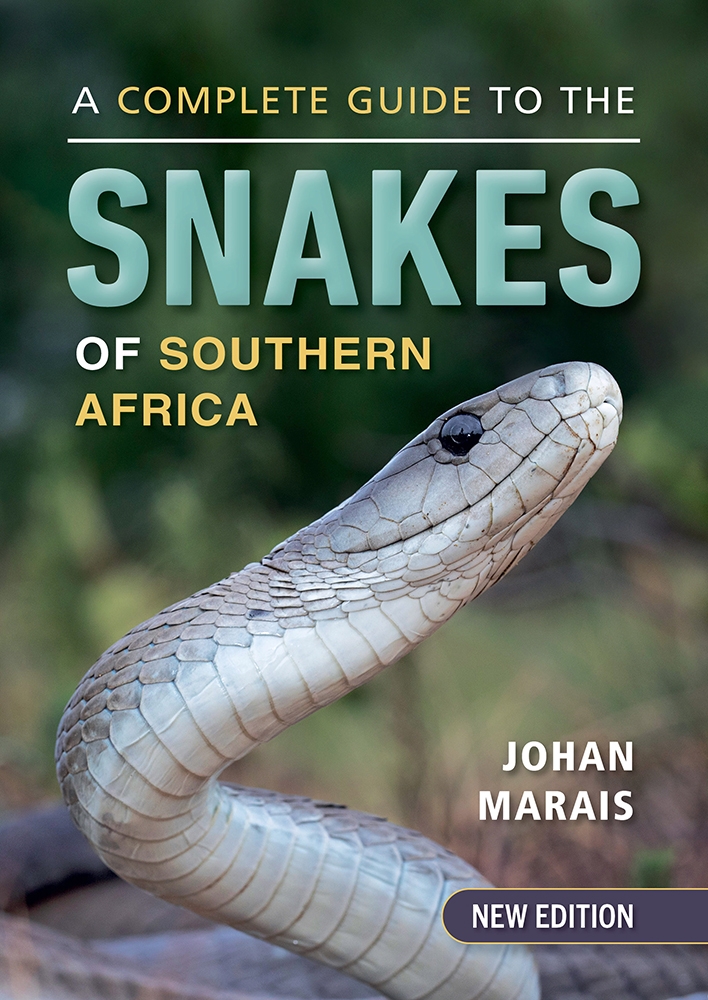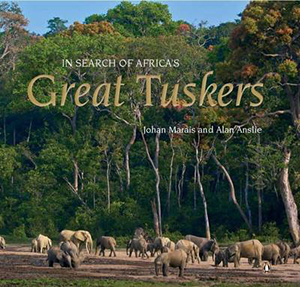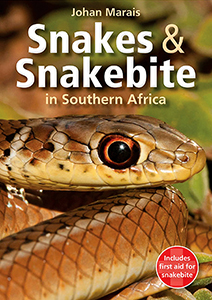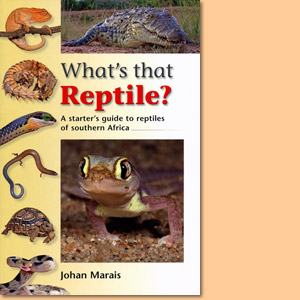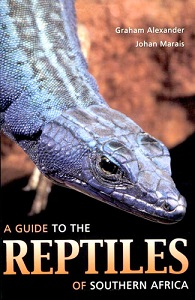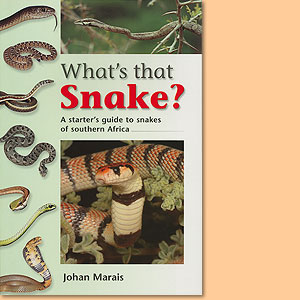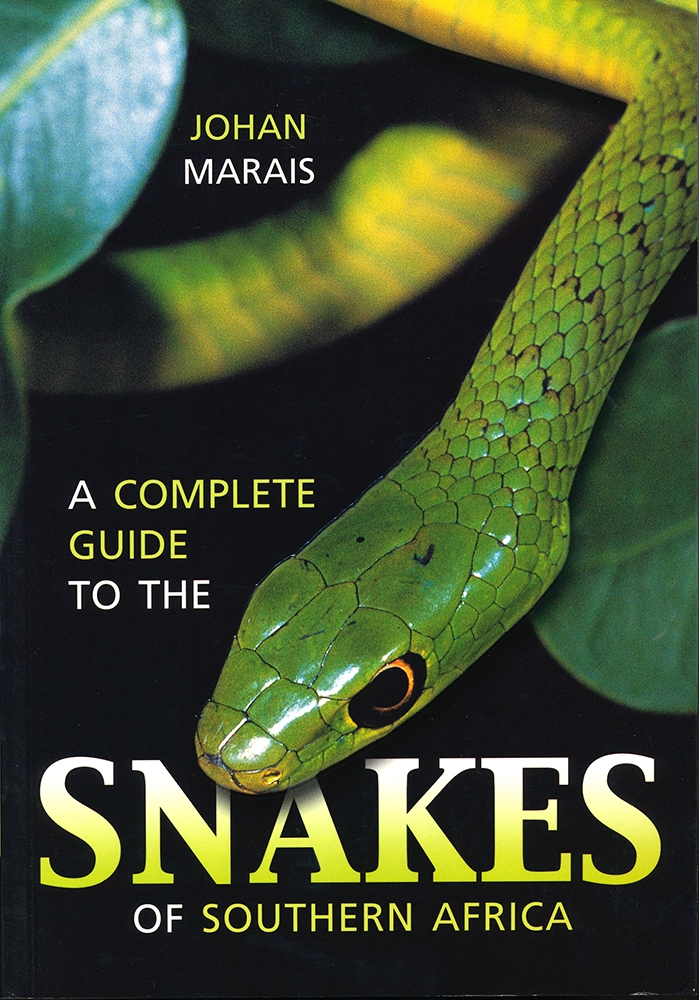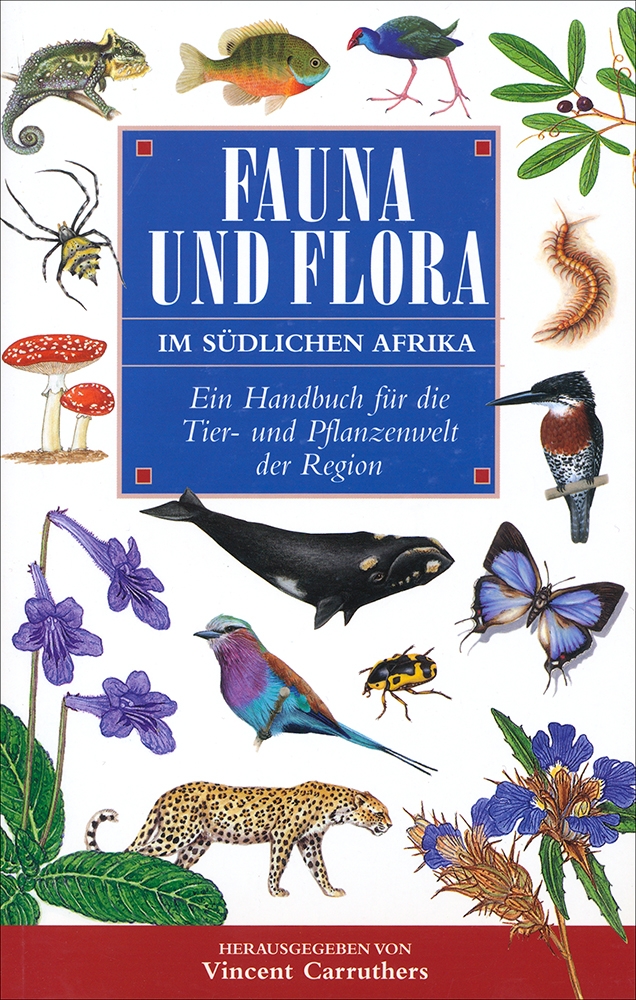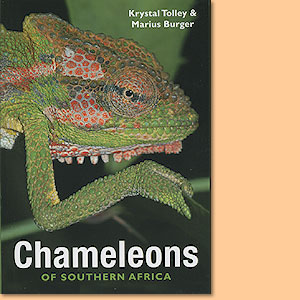What’s that snake? A starter’s guide to snakes of southern Africa, by Johan Marais
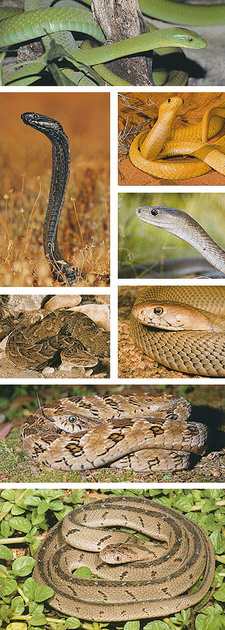
What’s that snake? A starter’s guide to snakes of southern helps you identify group characteristics before identifying individual species.
Finding snakes: Within each of the broader habitat zones, snakes seek out shelter in a number of places - under rocks, in bushes, in trees and even underground. Most snakes are ground-living, and are active exclusively either during the day or at night.
They hide in rodent burrows, under rocks and logs, or in deserted termite mounds. In summer, diurnal snakes tend to be more active in the mornings, when they emerge from their hideouts and search for food or bask in the sun. Many of the nocturnal snakes become active at twilight and remain so until midnight, when their activity drops off dramatically. There are many fossorial species - those that spend most of their lives underground. They are seldom encountered, except when they are exposed during digging or cleaning-up operations, or when forced to the surface after heavy rains. Tree-living snakes, such as the Boomslang, Green Mamba and some of the bush snakes, spend most of their lives in trees and shrubs, seldom venturing to the ground, where they are far more vulnerable. Some of these snakes have specially adapted scales on the belly with ridges or keels to assist climbing. Other species are rock-living, hiding in narrow crevices during the day and emerging in the early evening to look for food. The Spotted Rock Snake has a very flat body and head, making it particularly well adapted for hiding in rock crevices.
Should you wish to catch snakes, it is important to bear in mind that permits are required in most provinces, and that venomous snakes should never be handled by inexperienced people. You can find snakes by looking under stones and rocks. Take care not to damage the habitat, and rocks that are moved should be returned to their original position. Collectors place sheets of corrugated tin or asbestos in shaded areas, knowing that snakes will use them as refuges to hide beneath. In some areas, collectors gather specimens by driving along quiet tarred roads and catching snakes that cross the roads. This method of collecting is illegal in some provinces, and advice should be sought from the authorities prior to collecting. Snake enthusiasts often smash open deserted termite mounds, but find that most of the snakes that inhabit these mounds are not species they want. This collecting method is very destructive.
Seeing snakes in the wild, especially in game reserves, is usually a matter of chance. Many snakes bask in the sun in the early mornings, so look on the eastern side of shrubs and bushes. If tree-living snakes occur in the region, check the lower branches of trees or look in shrubs, again on the eastern side early in the morning. Snakes are not easy to spot as they are secretive and elusive, and do their utmost to avoid humans. Should you come across a snake eating, especially a python with a large meal, observe it from a safe distance, as the snake will either leave its food or regurgitate it should you disturb it. [...]
Example: Dwarf Adders
There are seven dwarf adders that occur largely in the drier, western half of the region. They average around 250-350 mm in length and have triangular heads that are well distinguished from the rest of the body. Their venom is largely cell-destroying, and their bite is rather painful but seldom life-threatening. The dwarf adders all look fairly similar and it’s hard to distinguish one from another. A bite from any one of the small adders may be extremely painful and result in some swelling, especially those on the finger, but the symptoms are mild and seldom of any serious concern.
Tell-tale sings:
• Triangular head, very distinct from the rest of the body
• Some have a single horn or tufts of horns above the eyes
• Most active at sunset or in the early morning
• Hiss and puff and strike aggressively if threatened
• Often seen crossing roads at night
The Horned Adder usually has a single, distinct horn above each eye. Individuals vary in colour, usually depending on the area in which they occur. This is the most common of the dwarf adders with the widest distribution, covering much of the western half of southern Africa, but extending as far east as Mpumalanga and Zimbabwe. It seeks shelter in the shade of shrubs, and emerges in the early evening to hunt for lizards. It feeds on small lizards such as geckos and skinks, as well as small birds, rodents and frogs. Between 3 and 8, but as many as 27, young are produced in summer or early autumn. When threatened, a Horned Adder will inflate its body, hiss loudly and strike repeatedly.
The Many-horned Adder is probably the largest of the dwarf adders, with captive individuals reaching a length of 750 mm. It occurs in the drier west and usually has a tuft of around five or six horns above each eye. This snake prefers rocky areas and is very common around Springbok in Namaqualand. During the day it seeks shelter in rodent burrows and rock cracks and emerges at sun-set to hunt for lizards and small rodents. Between 4 and 14 young, measuring 130-160 mm, are produced in late summer. Though the bite of this snake is not thought to be life-threatening, it is usually extremely painful.
The Desert Mountain Adder is a rare snake with a triangular head and dull grey appearance. It is found on dry, rocky hillsides in the vicinity of the Orange River, close to or in the Richtersveld, and a little further inland. This snake is very well camouflaged and difficult to see. It doesn’t bury itself in sand like some of the other little adders, and hisses and strikes if cornered. Females produce up to 5 young in summer.
The Plain Mountain Adder is dull reddish brown in colour, but may have faint darker blotches on the back. It is found only in the Sneeuberg, from north of Graaff-Reinet to Cradock. It hides under rocks or in grass tussocks during the day, but may emerge to bask in the sun. It is a rare little adder that feeds on lizards and small rodents. Up to 8 young are produced in summer. Although no human bites have been recorded to date, the venom of this snake is probably similar to that of other small adders.
The Red Adder is plain red or reddish-brown with paired blotches on the back. It occurs from the Cederberg to the Roggeveldberg and Komsberg, in the same areas as the Many-horned Adder. It hides under shrubs and rocks, but may bask in the mornings. This rare adder was first described in 1997. It feeds on lizards, especially geckos and skinks, as well as small rodents. Up to 10 young are bom in summer. No human bites have been recorded, but the venom of this snake is thought to be similar to that of the other small adders, causing local pain and swelling.
The Albany Adder is found only in the Algoa Bay area of the Eastern Cape, where most of its habitat has been destroyed. Further development in the area will pose a serious threat to the survival of this species. Very few individuals have ever been seen and little is known of the habits of this snake.
The Southern Adder grows in excess of 400 mm and has little tufts of horns above each eye that are greatly reduced and smaller than those of the Many-horned Adder. It occurs in low-lying coastal fynbos in the southwestern Cape. It has been found seeking shelter under limestone rock slabs and is most active in the early mornings or evenings. Like the other small adders, it feeds on lizards and small rodents. Up to 7 young are produced in summer. [...]
This is an extract from: What’s that snake? A starter’s guide to snakes of southern Africa
Book title: What’s that Snake?
Subtitle: A starter’s guide to snakes of southern Africa
Author: Johan Marais
Struik Publishers
Cape Town, South Africa 2007
ISBN 9781770073739
Softcover, 17x 25 cm, 96 pages, many colour photos
Marais, Johan im Namibiana-Buchangebot
A Complete Guide to the Snakes of Southern Africa
A Complete Guide to the Snakes of Southern Africa: this is updated and expanded 3rd edition / 2022.
In search of Africa's Great Tuskers
In Search of Africa's Great Tuskers we travels to some of the most remote and beautiful African landscapes to meet the legendary 'hundred-pounders' bull elephants.
Snakes & snakebite in Southern Africa
This guide is an uncomplicated approach to snakes and snakebites in Southern Africa, the emphasis is on identification, and on first aid treatment of snakebites.
What's that Reptile? A starter's guide to reptils of southern Africa
What’s that? series introduces starters to the diverse reptile fauna of southern Africa, including its snakes, lizards, crocodiles, tortoises, terrapins and turtles.
A Guide to the Reptiles of Southern Africa
A Guide to the Reptiles of Southern Africa introduces the 517 species currently described in the region, arranged into three main groups - snakes and lizards, crocodiles, and shelled reptiles.
What’s that Snake? A starter’s guide to snakes of southern Africa
What’s that snake is a good starter’s guide to identification of most common snakes of southern Africa.
A Complete Guide to the Snakes of Southern Africa (2nd edtion 2004)
The complete guide covers all essential aspects of snake biology and behaviour to 151 snakes of southern Africa. This 2nd edtion 2004 is on special offer.
Weitere Buchempfehlungen
Safari Fieber: Jagd auf Büffel, Gepard, Plainsgame in Zimbabwe und Namibia (DVD)
Safari Fieber: Jagd auf Büffel, Gepard, Plainsgame in Zimbabwe und Namibia ist die zweite DVD von Hunting Joe.
Fauna und Flora im südlichen Afrika
Fauna und Flora im südlichen Afrika: Ein sehr beliebtes Handbuch für die Tier- und Pflanzenwelt der Region.
Chameleons of Southern Africa
Overview of all types, their history, distribution, reproduction, behaviour and relationships to each other

